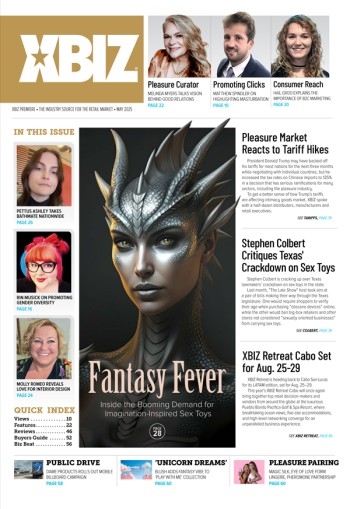In the multifaceted universe of marketing and branding, two elements — logo and brand —are frequently misinterpreted as interchangeable. Despite this common misperception, the two possess distinct characteristics. A logo is a visual symbol or design that viewers identify with the brand, while the brand itself extends beyond mere physical identification, encompassing emotions, associations and experiences related to a product or the company that makes it. This article will demystify crucial differences between logos and brands, and delve into their complex interplay, detailing how they jointly shape a company’s identity and reputation in the marketplace.
Defining a Logo
A robust brand, symbolized by a compelling logo, evolves into a company’s most valuable asset and the cornerstone of long-term success.
A logo is a visual symbol encapsulating an organization’s image and identity. It serves as a pictorial representation of a company or brand, distilling the company’s essence into an identifiable mark. Logos can take different forms. They might be purely graphical, showcasing symbols or icons — or typographical, featuring the organization’s name as a logotype or wordmark.
A logo’s design quality can significantly impact a business’s success. A well-executed logo can engender trust and attract potential customers, while a poorly designed logo might suggest unprofessionalism and deter them. A creative, professional logo is thus paramount, as it visually communicates the brand’s essence to customers and the broader public.
Typically, a logo constitutes a consumer’s first interaction with a brand. It should, therefore, leave a lasting impression. A logo can communicate various facets of a company, from its name and offerings to its ethos and branding style. It is critical to a company’s overarching brand image and identity.
Some globally iconic logos include Apple Inc.’s apple, Nike’s swoosh and McDonald’s golden arches. Despite their lack of text, these logos are easily identifiable due to their distinctive designs and extensive usage.
Exploring the Different Types of Logos
Logos come in many types, each boasting unique characteristics and specific applications. The primary categories include:
- Logotypes: These text-based logos feature the company’s name in a stylized and distinctive font. Google, Coca-Cola and IBM are well-known examples.
- Lettermarks: These logos highlight simplicity, featuring letters or the company’s initials. Hewlett-Packard’s “HP” and Louis Vuitton’s “LV” are instances of this.
- Pictorial Logo Marks: These icon-based logos are what people imagine when they think of a logo — Twitter’s bird, Apple’s apple and Nike’s swoosh are iconic pictorial marks.
- Abstract Logo Marks: These logos use an abstract form to symbolize the business, such as the Pepsi divided circle or the Adidas three stripes.
- Mascots: These logos feature an engaging character. Often colorful, sometimes cartoonish, examples include the Michelin Man, KFC’s Colonel and Planters’ Mr. Peanut.
- Combination Mark: This type of logo blends a wordmark or lettermark with a pictorial mark, abstract mark or mascot. Burger King, Lacoste and Doritos have combination mark logos.
- Emblems: Emblem logos embed text within a symbol or an icon, giving the impression of a badge, seal or crest. Starbucks, Harley-Davidson and the NFL use emblem logos.
Each type of logo offers advantages and can be effective in various contexts. A startup might favor a wordmark logo to establish its name, while a company with a unique mascot might opt for a symbol that underscores that character. The choice depends on the brand’s identity, industry and target audience.
Logo Versus Brand: Clearing the Misconceptions
Despite often being used interchangeably, “brand” and “logo” are not synonymous. A brand encompasses a broader scope than a logo and includes numerous other elements.
A brand can be understood as the overall perception of a company or a product. It transcends the tangible, including all touch points consumers have with a company — from its products or services to its advertising and marketing strategies, customer service and logo. A brand represents many feelings, expectations, narratives and relationships that collectively influence a consumer to choose one product or service over another.
Conversely, a logo is a visual identifier for a company or product. It forms a crucial part of a company’s brand but is not the brand in totality. Instead, it is a symbol that encapsulates and prompts the brand’s feelings, expectations, stories and relationships.
The two do interact in crucial ways, however. A logo is a visual abbreviation for the brand. Often a consumer’s first contact point with a company, a logo can significantly mold the brand image or the consumer’s perception of the brand. A well-designed logo can effectively express the brand’s identity, including its values, objectives and personality. However, a logo in isolation cannot create a strong brand; that requires the support of high-quality products or services, effective marketing campaigns and positive customer interactions. When these elements align cohesively, the logo is a potent reminder of the brand’s value and reputation — but the brand is the larger narrative that leaves a lasting impact.
Comprehending the intricate interplay between a logo and a brand is crucial for any business aiming to establish a robust identity and foster audience loyalty. A robust brand, symbolized by a compelling logo, evolves into a company’s most valuable asset and the cornerstone of long-term success. This symbiotic relationship lays the groundwork for a brand that captures attention, and wins hearts and minds.
Joe Powell is a graphic designer, brand creator and B2B and B2C marketing professional. For over 25 years, he has held remote contract roles in which he specializes in best-practice tactics for visual/brand identity and product development.







